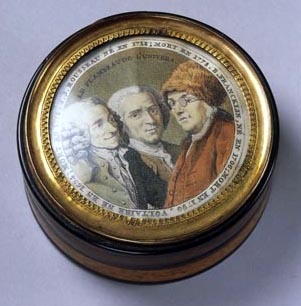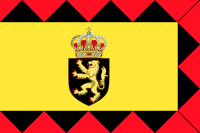Week 7: Triumph and Crisis of the Old Regime
Textbook readings: Birn, Chapter 9-10. This week we examine the impact of Enlightenment on European politics, from two vantage points. First, we study a series of efforts to reform society from the top down in an enlightened mold; then we look at the complex relationship between Enlightenment, the “public sphere,” and popular protest. Along the way, we'll revisit the balance of power in Europe as it transformed during the second half of the eighteenth century.
The Era of Enlightened Reforms
I. “Enlightened Absolutism”
A. Four Characteristic Goals
1. Toleration for Religious Minorities
2. Reforming Criminal Justice
3. Sponsoring Industry, Trade, and Agriculture
4. Consolidating the Power of the State
B. Case in Point: The Abolition of Judicial TortureImage: Cesare Beccaria (1738-1794)
Image: Dei delitte e delle pene (1764)
Excursus: Instruments of Judicial Torture
Excursus: The Constitutio Criminalis Theresiana (1768)II. Three Reformers
A. Prussia: The Reforms of Frederick II (r. 1740-1786)
1. Frederick as Aufklärer
2. Frederick and Religion: Pluralism and an Open Door
3. Reform of the State: Equity and Alacrity in the Legal SystemImage: Antoine Pense (1683-1757), Crown Prince Frederick of Prussia (1730)
Image: Adolf von Menzel (1815-1905), The Flute Concert (1852)Image right: Johann Georg Ziesenis (1716-1776), Frederick II, King of Prussia (1763). The only portrait of King Frederick for which he is known to have posed. Image source: Wikimedia Commons.
 |
B.
The Reforms of Joseph, the “People’s Emperor” (Emperor 1765-1780; Ruler of the Habsburgs Lands, 1780-1790) Image: Jean-Étienne Liotard (1702–1789), Maria Theresia of Austria (1762) C. Enlightened Reform in Spain under Charles III (r. 1759-1788) Image: Charles III, King of Spain (r. 1759-1788) III. The European State
System in the Age of “Limited War” Map: The War of the Austrian Succession (1740-1748) Image left: Emperor Joseph II (1765-1790), the “People’s Emperor”. Image source: Wikimedia Commons. Image right: An allegory of the Miller Arnold affair (1770-1779), in which Frederick II intervened on against his own judiciary on behalf of a poor miller, whom the king believed had been the victim of socially biased justice. |
.jpg)


.jpg)
.jpg)